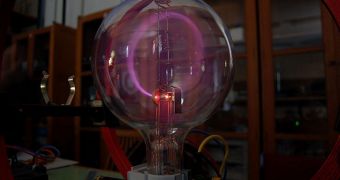American researchers at the University of Michigan announce that it is possible to create something out of nothing when the right conditions are met. In this case, what is needed is an ultra-high-intensity laser beam and a particle accelerator at least two miles in length.
What the team argues is that setting in motion a cascade of events capable of eventually producing pairs of particles and antiparticles is possible in a vacuum, where no discernible matter exists.
In a new set of equations developed at the university, the team demonstrated that a high-energy electron beam, working together with an intense laser pulse, could start ripping vacuum apart.
This would break it into its fundamental components, both matter and antimatter particles. In turn, this would result in the onset of a cascade of events that would ultimately produce particles and antiparticles in similar amounts.
Essential to the new calculations is the assumption that a vacuum cannot be thought of as containing absolutely nothing.
“It is better to say, following theoretical physicist Paul Dirac, that a vacuum, or nothing, is the combination of matter and antimatter – particles and antiparticles,” says Igor Sokolov.
“Their density is tremendous, but we cannot perceive any of them because their observable effects entirely cancel each other out,” he adds.
Under normal conditions, matter and antimatter can literally cancel each other out, when their constituent particles annihilate each other, producing energy.
This happened at least once before, in an event called the Big Bang, which inflated our Universe into being. Obviously, not all matter and antimatter interacted, otherwise nothing would be here.
“We can now calculate how, from a single electron, several hundred particles can be produced. We believe this happens in nature near pulsars and neutron stars,” explains Sokolov.
The expert holds an appointment as an engineering research scientist at the university. He conducted the work alongside U-M associate research scientist John Nees, and emeritus electrical engineering professor Gerard Mourou. Scientists in France also contributed.
“But in a strong electromagnetic field, this annihilation, which is typically a sink mechanism, can be the source of new particles. In the course of the annihilation, gamma photons appear, which can produce additional electrons and positrons,” Nees explains.
The study is considered to be a theoretical breakthrough in the field of theoretical physics, as well as a “qualitative jump in theory.”
The US Department of Energy (DOE)-sponsored work was published in a paper entitled “Pair Creation in QED-Strong Pulsed Laser Fields Interacting with Electron Beams,” which appears in a recent issue of the top journal Physical Review Letters.

 14 DAY TRIAL //
14 DAY TRIAL //